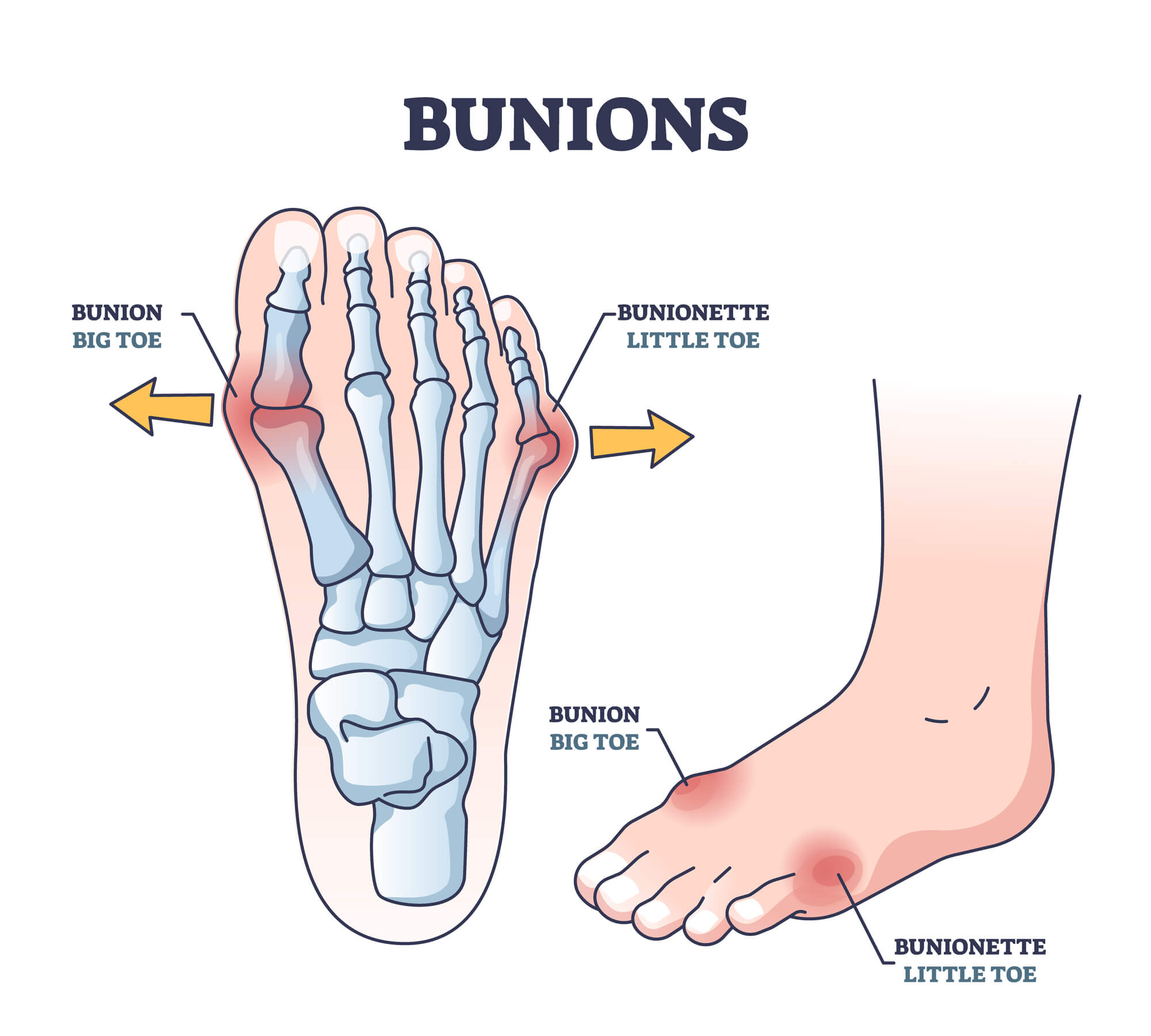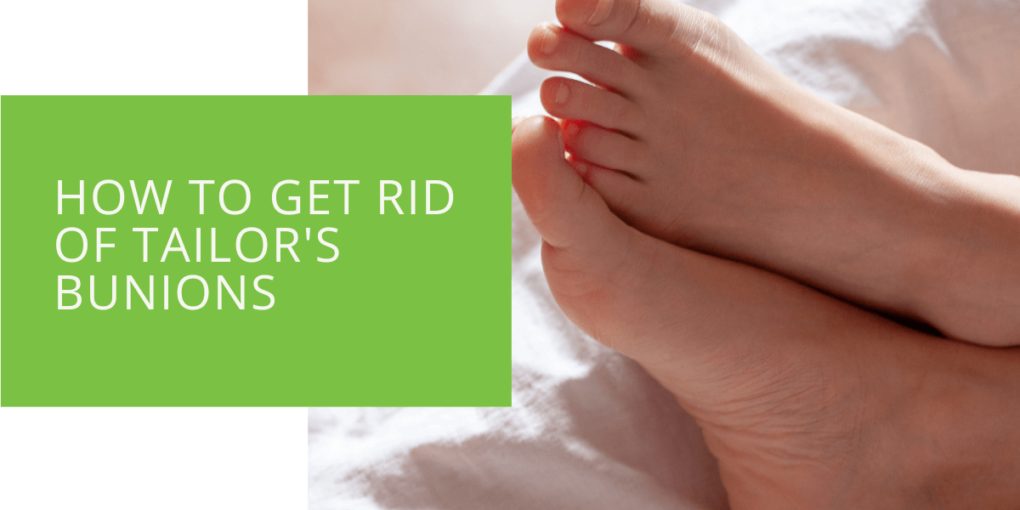How to Get Rid of Tailor’s Bunions
Tailor's bunions, also known as bunionettes, are common foot conditions that affect the outside of the foot near the little toe. Like traditional bunions, tailor's bunions can be painful and interfere with daily activities. If you are experiencing symptoms of a tailor's bunion, several treatment options are available to alleviate your pain and discomfort. This article will explore the causes and symptoms of tailor's bunions, as well as effective treatment options and prevention tips.
What Are Tailor's Bunions?
Tailor's bunions, also known as bunionettes, are bony bumps outside the foot at the base of the fifth metatarsal bone. They are similar to traditional bunions, which form on the inside of the foot at the base of the big toe. Tailor bunions can cause pain and discomfort when wearing shoes and can become more prominent over time.
Symptoms of a tailor's bunion can include redness, swelling, and tenderness around the bony bump. The toe joint may also become stiff and difficult to move. The pain may be more noticeable when wearing shoes, particularly high heels or shoes with a narrow toe box.

Conservative Treatment Options
In many cases, tailor's bunions or bunionettes can be treated with conservative measures. These may include:
- Rest: Taking a break from activities that cause pain and discomfort.
- Ice: Applying ice to the affected area for 20-30 minutes at a time, several times daily.
- Shoe modifications: Wearing shoes with a wider toe box or extra padding can help alleviate pressure on the bony bump.
- Anti-inflammatory medication: Over-the-counter pain relievers, such as ibuprofen, can help to reduce pain and inflammation.
These treatments may be effective for mild cases of tailor's bunions and can be a good first step in alleviating pain and discomfort.
Over-the-Counter Products
Several over-the-counter products can be used to treat tailor's bunions. These may include:
- Topical creams: Creams containing menthol or capsaicin can help to relieve pain and reduce inflammation in the affected area.
- Pain relievers: Over-the-counter pain relievers, such as acetaminophen or ibuprofen, can help to reduce pain and inflammation.
While these products may provide some relief, they may not be effective for more severe cases of tailor's bunions.

In-Office Treatment Options
If conservative measures are ineffective in treating your tailor's bunion, your podiatrist may recommend in-office treatments. These may include:
- Injections: Corticosteroid injections can help to reduce pain and inflammation in the affected area.
- Orthotics: Custom-made shoe inserts can help alleviate pressure on the bony bump and support the foot.
- Physical therapy: Stretching and strengthening exercises can help to improve flexibility and reduce pain.
These treatments may be recommended for more moderate cases of tailor's bunions and can be an effective option for reducing pain and improving mobility.
Surgical Treatment Options
In severe cases of tailor's bunions, surgery may be necessary to remove the bony bump and realign the toe joint. This is usually a last resort after trying conservative and in-office treatments. Several surgical options are available, and your podiatrist can recommend the best course of action based on your needs.

Prevention Tips
Preventing tailor's bunions is often easier than treating them. Some tips to prevent the development of tailor's bunions include:
- Wearing shoes that fit properly: Too tight shoes can put pressure on the toes, causing the development of bunions.
- Avoiding high heels: High heels can cause the foot to be pushed forward into the toe box, increasing the risk of developing tailor's bunions.
- Stretching exercises: Regularly stretching the feet and toes can help to maintain flexibility and prevent the development of bunions.
- Avoiding activities that put excess pressure on the feet: Running or jumping can put a lot of pressure on the feet, increasing the risk of developing bunions.
When to See a Podiatrist
If you are experiencing symptoms of a tailor's bunion, seeing a podiatrist for a proper diagnosis and treatment plan is important. Your podiatrist can guide the most effective treatment options based on the severity of your condition. They can also help you to develop a personalized prevention plan to reduce the risk of future bunions.
Conclusion
Tailor's bunions can be painful and interfere with daily activities, but many treatment options are available. Tailor's bunions can be effectively treated through conservative measures, in-office treatments, or surgery. By taking preventive measures and seeing a podiatrist when necessary, you can maintain healthy feet and avoid the pain and discomfort of tailor's bunions. If you are experiencing symptoms of a tailor's bunion, talk to your podiatrist today to learn more about your treatment options.

